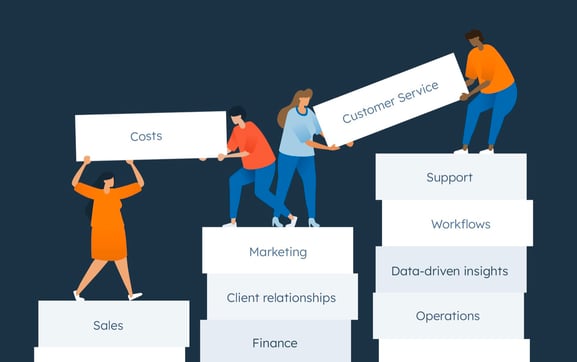Patrick O’Neill Managing Partner of Sherlock Communications and named Latin America’s Best PR Professional 2020 by PR Week Global Awards
getty
With its large, fast-growing and increasingly online population, Latin America is a priority market for e-commerce. This is ever more true since the beginning of the Covid-19 pandemic. More trustworthy payment methods and store pickup options have convinced a historically reluctant consumer sector to do more of their shopping online.
But entrepreneurs need to keep region-specific challenges in mind if they’re to make the most of an opportunity whose time seems to have come. Thinking of SEO and e-commerce together is the key to solving these.
SEO And Return On Investment
Content-driven SEO is one of the cheapest, fastest ways to get a business up and running in a new market, with traffic to products on content sites more likely through direct search than via social media links, paid ads or direct referrals.
The main legwork for an e-commerce site lies in building content around keywords and meta tags that drive a lot of traffic. Beyond this, it’s about simplifying site architecture and pruning broken links or missing text so that search engines can effectively crawl your site. Since search traffic data is reliable, free and fairly easy to get, tweaks to SEO strategy can increase precision in something approaching real time. But what kind of content drives SEO and e-commerce in Latin America?
SEO And E-Commerce In Latin America
In 2020, Latin America became the world’s fastest-growing region for e-commerce. The big winners from this moment have been the “big beasts” like Amazon, Mercado Libre and Mercado Livre, with their strong SEO and logistics.
That said, this fragmented, competitive market is in a prime moment for e-commerce merchants. Internet penetration in Latin America has never been higher, with approximately four out of five Argentines and Ecuadorians online, along with almost two-thirds of the Brazilian and Mexican population. Venezuela and Colombia are close behind, at almost 70% each.
As of January 2021, over 400 million potential e-commerce users were online across 17 countries in the region. The Covid-19 pandemic has accelerated this growth, with a rise of around 20% in online sales. The spike shows no sign of slowing, with mobile subscriptions in Latin America expected to rise to 484 million users by 2025.
The pandemic has done much to erode historic hesitancy around online buying. In Mexico, for example, less than 10% of retail sales took place online prior to the pandemic. That figure has jumped to 74% since.
Store pickup options have proven to be a useful “bridge” between more traditional consumption. E-commerce also had great success in Brazil and Mexico during the pandemic. So a listing on a locally recognized business directory with plenty of reviews is as important as a strong social media presence or a Google Business listing.
The average Latin American e-commerce user has specific preferences that merchants investing in SEO would do well to keep in mind when it comes to winning trust and giving buyers a smooth, mobile-friendly online experience.
Online Buyers In Latin America
The average online buyer in Latin America tends to use Android over iOS by a margin of about 80%, and they don’t spend much time window-shopping online. Almost half of all internet users in Latin America never go past page one of the Google search results, with almost 20% never looking past the top three results, even if they’re just ads. Making sure your brand name is at the very top of the first of the Google search results is paramount here.
Most searches take place via mobile: window shopping there before committing to the purchase. Goldman Sachs consumer research has found that some buyers use WhatsApp to complete purchases, making this a fruitful platform for selling as well as for advertising.
As such, an e-commerce layout with mobile-friendly image resolutions and buttons is a must for those entering the Latin American market, with written content optimized for a smaller interface.
Market research reflects increasing trust in online content, with the peaks being highest in Colombia, Peru and Mexico, according to research commissioned by my company.
However, the same report shows that content that works at pulling in a consumer in the U.S. might not work in Latin America. Blogging and review sites are the top draws for U.S. buyers. However, market research shows that consumers in Chile, for example, are particularly skeptical toward this kind of content, whereas an average of seven out of 10 buyers across Latin America favor review sites, even as they eschew blogs.
This research also shows that, across the region, e-commerce users tend to trust articles more than adverts or social media posts. Where this content is tied to a news hook, this will often be what wins over a buyer who is on the fence in Mexico, Brazil or Peru, particularly if the topic relates to technology. Content-driven SEO, then, is vital for deepening trust within this burgeoning regional market.
In short, a synergy between SEO and e-commerce is vital for anyone entering Latin American markets—and there has never been a better time for doing so. The winners of the early race for dominance in the region’s e-commerce market may have been the usual dominant players. Yet the future belongs to e-commerce merchants who can match their SEO with a mobile-friendly user interface and content that Latin American online buyers will trust.
Forbes Agency Council is an invitation-only community for executives in successful public relations, media strategy, creative and advertising agencies. Do I qualify?





More Stories
The Digital Graveyard in Your Drawer: How Singapore’s Device Buyback Revolution Is Rescuing Millions of Forgotten Gadgets
Shri Ram Global School the Finest Online Learning School in Greater Noida West
What Scriptless Test Automation Means for Software Testing Services Providers